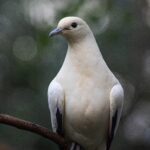Mystery of Nature
Nature is indeed a mystery. While checking out interesting topics on Quora, one of our editors came across an amazing share (by Thomas Cayne) on a Quora space, Conservation of nature and we thought to share it with you.
Nature is one force that remains beyond human comprehension. Have you ever sat down to ponder, how a charmingly beautiful, multi-colored butterfly forms out of a caterpillar? Science explains as much as can be explained, but what about what cannot be explained? This keeps pointing the to certainty of the fact that there is a supreme force existing out there that has put all these things in place.
Well, we shall probably talk about that another day, today our interest is on this May bug mystery. Grab your mug of coffee and join us, let’s see what Thomas says, below;
The metamorphosis of white grubs into May bugs.
One of my favorite animals in this universe is the May bug, also called cockchafer.
Although they were common insects in the past, the use of poison in gardens to extinct white grubs — the larvae of May bugs — has led to a true decimation of this beautiful large beetle.
White grubs live underground and are ferocious eaters of plant roots and other organic material, and as such are able to destroy your average lawn (if they appear in large numbers).
I personally don’t care.
My grass is much less important than my May beetles.
Now if a white grub is ready to change into a May bug (after three to five years of living down below), it creates an underground pupa chamber, and pupates into a beetle in early Fall.
The May bug overwinters underground until next Spring.
Then it arises in all its glory, only to die some seven weeks later after the reproduction process has been completed.
Now where is the miracle ?
Answer: the pupation process.
Just as in the case of caterpillars—pupa—butterflies, the inside of the white grub pupa changes into a soup, out of which all the organs of the beetle — antennas, legs, wings, but also internal organs — are created out of mere liquid !
(Pupa of a May bug.)
Only in very recent times, scientists have begun to understand and unravel the Bug Soup Mystery, and it all happens on a microscopic level.
Here is an excerpt which partially explains this genuine Hocus Pocus of Nature — the magic word is “imaginal disc:”
An imaginal disc is a sac-like epithelial structure found inside the larva of insects that undergo metamorphosis. Once the larva turns into a pupa, almost all the larval tissues degenerate and the imaginal discs turn into the external structures of the head, thorax, limbs and genitalia. The rest of the adult external structures (abdomen) originate from nests of histoblast cells that are also formed in the larva.
It gets even weirder and more magical: experiments have shown that in case of caterpillars and butterflies, the memory of the caterpillar is transferred to the butterfly,[2] and the same will undoubtedly be true for May bugs !!
It is May, and it has been cold.
But yesterday the first May beetles have appeared again.
Where I live right now, it is a very uncommon thing to see May bugs, but not if you live in my garden.
I live in a rural area near meadows and woods, and we always had them, but we did a number of things in our garden in order to help our garden populations of May bugs, (night and day) butterflies and bees.
Each year, we see hundreds of May bugs, and we literally sit outside on warmer evenings, when they are ZOOMING (covid19-pun intended) around our head, bumping into us, and then resting on our hands.
(A May bug on my daughter’s hand. Image taken yesterday.)
There is nothing which beats the sound of May beetles returning, once again.
Nothing.


